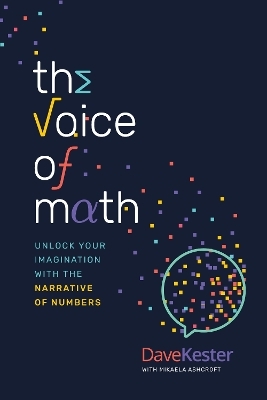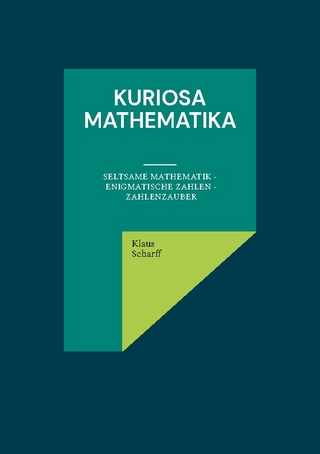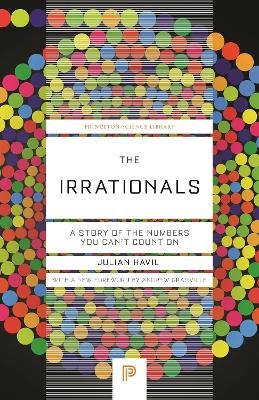
The Theory of Matrices
With Applications
Seiten
2016
Arcler Education Inc (Verlag)
978-1-68094-590-4 (ISBN)
Arcler Education Inc (Verlag)
978-1-68094-590-4 (ISBN)
Provides an introduction to the theory of matrices. A matrix is a collection of numbers arranged into a fixed number of rows and columns. Usually the numbers are real numbers. The individual items in a matrix are called its elements or entries.
A matrix is a collection of numbers arranged into a fixed number of rows and columns. Usually the numbers are real numbers. The individual items in a matrix are called its elements or entries. Two matrices can be added or subtracted element by element. The rule for matrix multiplication, however, is that two matrices can be multiplied only when the number of columns in the first equals the number of rows in the second. Any matrix can be multiplied element-wise by a scalar from its associated field. The product of two transformation matrices is a matrix that represents the composition of two linear transformations. Another application of matrices is in the solution of systems of linear equations. If the matrix is square, it is possible to deduce some of its properties by computing its determinant. For example, a square matrix has an inverse if and only if its determinant is not zero. Insight into the geometry of a linear transformation is obtainable (along with other information) from the matrix’s eigenvalues and eigenvectors. Matrix mathematics applies to several branches of science, as well as different mathematical disciplines. We see the results of matrix mathematics in every computer-generated image that has a reflection, or distortion effects such as light passing through rippling water. Before computer graphics, the science of optics used matrix mathematics to account for reflection and for refraction. Matrix arithmetic helps us calculate the electrical properties of a circuit, with voltage, amperage, resistance, etc. In mathematics, one application of matrix notation supports graph theory. In an adjacency matrix, the integer values of each element indicates how many connections a particular node has. The field of probability and statistics may use matrix representations. A probability vector lists the probabilities of different outcomes of one trial. A stochastic matrix is a square matrix whose rows are probability vectors. Computers run Markov simulations based on stochastic matrices in order to model events ranging from gambling through weather forecasting to quantum mechanics. Matrix mathematics simplifies linear algebra, at least in providing a more compact way to deal with groups of equations in linear algebra.
A matrix is a collection of numbers arranged into a fixed number of rows and columns. Usually the numbers are real numbers. The individual items in a matrix are called its elements or entries. Two matrices can be added or subtracted element by element. The rule for matrix multiplication, however, is that two matrices can be multiplied only when the number of columns in the first equals the number of rows in the second. Any matrix can be multiplied element-wise by a scalar from its associated field. The product of two transformation matrices is a matrix that represents the composition of two linear transformations. Another application of matrices is in the solution of systems of linear equations. If the matrix is square, it is possible to deduce some of its properties by computing its determinant. For example, a square matrix has an inverse if and only if its determinant is not zero. Insight into the geometry of a linear transformation is obtainable (along with other information) from the matrix’s eigenvalues and eigenvectors. Matrix mathematics applies to several branches of science, as well as different mathematical disciplines. We see the results of matrix mathematics in every computer-generated image that has a reflection, or distortion effects such as light passing through rippling water. Before computer graphics, the science of optics used matrix mathematics to account for reflection and for refraction. Matrix arithmetic helps us calculate the electrical properties of a circuit, with voltage, amperage, resistance, etc. In mathematics, one application of matrix notation supports graph theory. In an adjacency matrix, the integer values of each element indicates how many connections a particular node has. The field of probability and statistics may use matrix representations. A probability vector lists the probabilities of different outcomes of one trial. A stochastic matrix is a square matrix whose rows are probability vectors. Computers run Markov simulations based on stochastic matrices in order to model events ranging from gambling through weather forecasting to quantum mechanics. Matrix mathematics simplifies linear algebra, at least in providing a more compact way to deal with groups of equations in linear algebra.
Catherine Borres is currently taking up Master of Arts in Education Major in Mathematics in Philippine Normal University – Manila. She is currently working as a Content Developer for Mathematics at the Affordable Private Education Center (APEC Schools).
| Erscheinungsdatum | 20.03.2018 |
|---|---|
| Sprache | englisch |
| Maße | 152 x 229 mm |
| Themenwelt | Mathematik / Informatik ► Mathematik ► Arithmetik / Zahlentheorie |
| ISBN-10 | 1-68094-590-4 / 1680945904 |
| ISBN-13 | 978-1-68094-590-4 / 9781680945904 |
| Zustand | Neuware |
| Informationen gemäß Produktsicherheitsverordnung (GPSR) | |
| Haben Sie eine Frage zum Produkt? |
Mehr entdecken
aus dem Bereich
aus dem Bereich
unlock your imagination with the narrative of numbers
Buch | Softcover (2024)
Advantage Media Group (Verlag)
19,90 €
Seltsame Mathematik - Enigmatische Zahlen - Zahlenzauber
Buch | Softcover (2024)
BoD – Books on Demand (Verlag)
20,00 €
A Story of the Numbers You Can't Count On
Buch | Softcover (2023)
Princeton University Press (Verlag)
21,15 €


